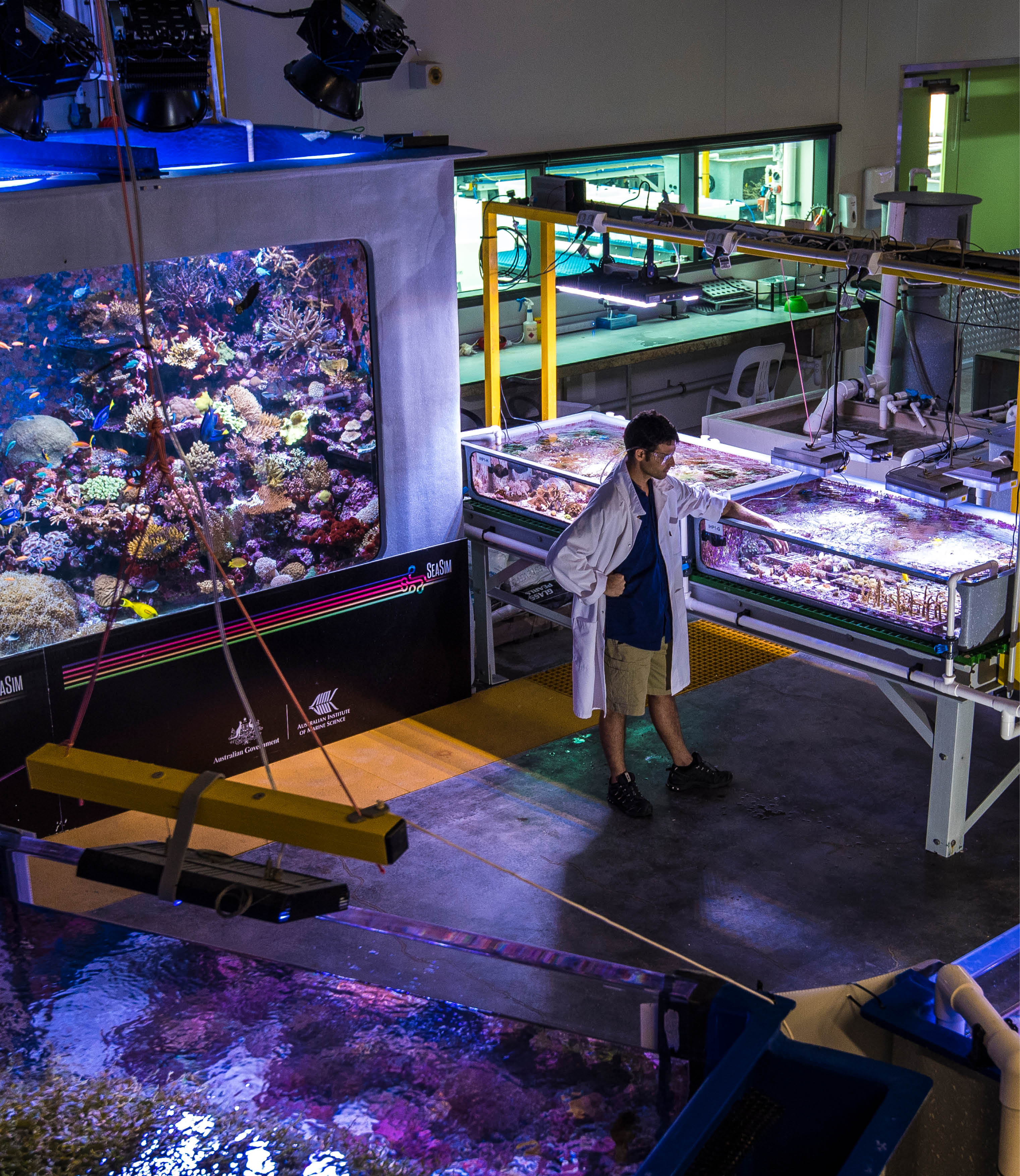In 2013, SAGE Automation was appointed to develop the SeaSim control system.
Process Control Solution
The control system consists of redundant Siemens PCS 7 with a redundant fibre optic ring arrangement. Remote monitoring and fault diagnostic capabilities are enabled via a web server.
AIMS uses specialised instruments for analysing major elements, trace elements and nutrients in marine-related samples, including seawater, marine sediment and mangroves. These link back to the control system and all data is recorded to provide long term access to key project data.
Data collection
Important process data and data relevant to individual experimental data are recorded (recording intervals are highly configurable) in Historian Server. Automatic and manual reports can be generated on Information Server, again Information Server Clients can be run on standard office PC environment across the World Wide Web but under very stringent Firewall and all other IT access control methods.
In the future, SeaSim will provide facilities for the long-term holding and propagation of corals as model organisms for research. This will allow multi-generational studies, which are critical in understanding how marine organisms acclimatise and adapt to a changing environment.
Technology used
Control system
Siemens PCS 7, featuring two independent Redundant Controllers for the;
1. SEASIM Experimental Area, covering water supply with precise +/- 0.1°C tolerance over minutes and salinity and pH control, CO2 control, the Building Air Handling System to control and record the humidity and temperature of each room as well as Lighting control for predetermined profiles which was undertaken by SeaSim staff through the use of S7-1200’s after SAGE had completed the implementation of their component of the controls.
2. Sea Water Processing (SWP), providing the vital seawater supply to the experimental area from a beach intake point 1.5km away in raw form via a Reverse Osmosis process, to supply the seawater within accurate salinity level.
Communication protocols
Communication protocols used include Standard Ethernet, Profinet, Profibus, BACNET and Modbus, to provide maximum availability of the control system, connect various devices such as VSDs, Control Valves and Mass controllers as well as connect the Building Air Handling system, Generator Monitoring systems and lighting control.
SCADA system
Redundant SCADA Servers provide the High Available Operator Control and Monitoring Station across the entire facility for 18 SCADA Clients on site and up to 10 simultaneous Web Clients in World Wide Web via a stringent Firewall and all other IT access control methods.







